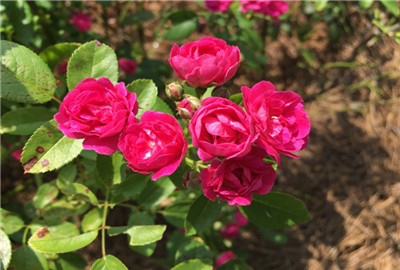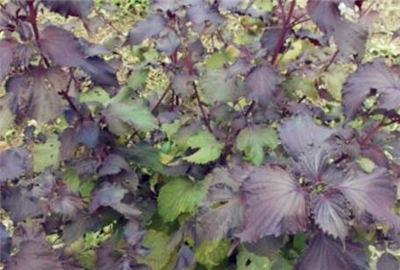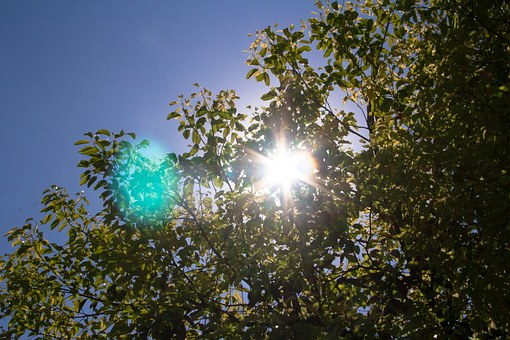What are woody flowers? How to control weeds in a nursery growing woody flowers?
What are woody flowers? Woody flowers, to put it simply, flowers themselves stem wood is more developed, much harder than herbaceous flowers, common woody flowers are rose, rose, bauhinia and so on. Today we are mainly talking about the problem of weed eradication in woody flower nursery, so how can the nursery growing woody flowers get rid of weeds effectively?

01 common weeding methods
At present, most of the control methods of weeds in woody flower nursery are manual pulling, tillage, plastic film mulching and so on, but these methods are usually time-consuming and ineffective, and the problem of repeated growth of weeds is more serious.
02 use of herbicides
Most gardeners do not want to eat herbicides in the nursery for fear of hurting flowers, but as long as they are done properly, they will get twice the result with half the effort. So how to use herbicides in woody flower nurseries? Judging from the score.
(1) Annual or biennial seedlings
Method 1:
Herbicides with high safety to seedlings can be used before weed germination. For example, using 2.5% herbicide wettable powder 400-600 grams per mu, mixed with sifted dry fine soil 40 kg per mu, can control 1-year-old Compositae and Gramineae weeds, with a validity period of up to 1 month.
Method 2:
Some herbicides can also be used for stem and leaf treatment during the peak period of weed growth, such as using 12.5% Gengcao EC 40-80 ml per mu, adding 40 kg of water, and spraying into a liquid, which can effectively control a variety of annual Gramineae weeds.
For example, when there are many dicotyledonous weeds in the nursery, 10.8% high-efficiency Gancao Neng EC and 3.5% Guole EC can also be mixed with 1 ∶ 1 to carry out leaf treatment between the rows of seedlings, which can effectively control annual monocotyledonous and dicotyledonous weeds and has no adverse effect on seedling growth.
(2) seedlings of more than two years old
You can choose herbicide or 50% promethazine wettable powder 100-200 grams per mu, mixed with 40 kg of sifted dry fine soil to control weeds such as Niangmai, Kentucky bluegrass, Qianjin, shepherd's purse, barnyard barnyard, horse tang and other weeds.
For large seedlings and young trees with high trunk and secondary transplanting, you can use 10% glyphosate water agent 750 ml per mu, or 20% paraquat water agent 100-200 ml per mu, and 40% atrazine suspension 150-250 ml per mu, which can be mixed into a solution and sprayed on the soil surface.
(3) use drugs according to the morphological differences of stems and leaves.
Some broad-leaved seedlings, such as camellia, Michelia, Magnolia, privet, etc., can also be treated with glyphosate directional spray for stems and leaves.
Other broad-leaved seedlings, such as albizzia, bauhinia, hibiscus, etc., cannot use glyphosate, but before sprouting, you can use 24% Guole EC 10-15ml per mu, mixed with dry soil to spread, and then wash the seedlings with clean water to control annual monocotyledon and dicotyledonous weeds, but harmless to the seedlings.
In general, coniferous flowers have stronger drug resistance than broad-leaved flowers. For Pinus elliottii, pine and cypress, Platycladus orientalis, etc., we can use 10% glyphosate water agent 750 ml per mu and add water to directly treat the stems and leaves, which can effectively kill perennial weeds such as thatch, thorn and bitter vegetables, and is relatively safe for seedlings.
(4) rare and precious flowers
Be extra cautious about the use of medicine in some rare precious flowers, such as rhododendron, tea plum and so on. When the weeds are about 15 cm, 0.3% w / 0.4% solution of glyphosate can be applied to the stems and leaves of weeds, so as to avoid the drug damage caused by touching the seedlings, and 400-600 grams per mu of wettable powder of 25% herbicide can be used to sprinkle the medicinal soil on the seedling bed before the weeds sprout, and then sweep the medicinal soil that falls on the seedlings.
In addition, 48% trifluralin EC can be sprayed on the bed with 48% trifluralin EC 80-100 ml per mu, adding 50 liters of water before the weeds sprout, then wash the seedlings with clean water, wait for the seedlings to dry, and then cover them with an appropriate amount of fine soil, so as not to affect the efficacy of trifluralin volatilization and photolysis.
(5) Pine and cypress flowers and trees
For the leathery leaves, Michelia mollissima with waxy layer on the surface, camellia, privet, magnolia, etc., and the pine and cypress flowers with aromatic grease in stems and leaves, because of their strong drug resistance, herbicides with poor selectivity such as glyphosate were sprayed on the stems and leaves of weeds in sunny and windless weather. For flowers and trees with thin leaves and less wax, French holly and hibiscus, hemp leaf hydrangea and other flowers and trees, because of their poor drug resistance, we can only use this selective and safe herbicide for stem and leaf treatment.
In addition, it must be emphasized that the use of 20% Baicao water-repellent must be carried out before the sprouting of cuttings and forbidden after sprouting! 65% glyphosate soluble powder and 20% paraquat are used in the nursery, and micro-ultra-low volume spray is generally not used to prevent drug damage to seedlings due to liquid drift. Be sure to pay attention to your own safety when using herbicides, cover your mouth and nose, and don't touch the skin.
Time: 2019-03-25 Click:
- Prev

How much is wild perilla per jin? How do you plant it? Where is the main distribution?
Wild perilla is produced in Shanxi, Hebei, Hunan, Hubei, Jiangxi, Zhejiang, Jiangsu, Fujian, Taiwan, Guangdong, Guangxi, Yunnan, Guizhou and Sichuan. So how much is the wild perilla per jin? How do you plant it? Where is the main distribution? Perilla price: it is understood
- Next

How much is each camphor tree and ginkgo tree? Is it suitable for planting in the north?
Camphor tree is an excellent greening tree, street tree and shade tree, all plants have camphor aroma, can extract camphor and camphor oil, its material is excellent, it is a good material for making furniture, it is resistant to harmful gases such as chlorine, sulfur dioxide, ozone and fluorine, can drive mosquitoes and flies, and can withstand short-term flooding.
Related
- Fuxing push coffee new agricultural production and marketing class: lack of small-scale processing plants
- Jujube rice field leisure farm deep ploughing Yilan for five years to create a space for organic food and play
- Nongyu Farm-A trial of organic papaya for brave women with advanced technology
- Four points for attention in the prevention and control of diseases and insect pests of edible fungi
- How to add nutrient solution to Edible Fungi
- Is there any good way to control edible fungus mites?
- Open Inoculation Technology of Edible Fungi
- Is there any clever way to use fertilizer for edible fungus in winter?
- What agents are used to kill the pathogens of edible fungi in the mushroom shed?
- Rapid drying of Edible Fungi

